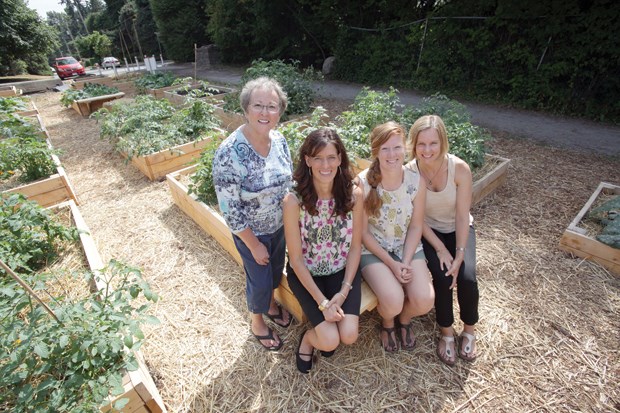There are days when the gardening and landscaping industry seems singularly fixated on selling products instead of keeping the faith.
But I find solace in hopeful new beginnings found in the hearts of people who make green contributions to society. And it's the residents of Blueridge/Seymour Heights in the District of North Vancouver that are recharging my belief that we still have the time to green our world before it burns.
Under the district's Adopt a Street Program, the new Blueridge Sharing Garden has sprouted to life on a previously vacant and brambly road allowance. Some people may think, "It's just another veggie patch by the road side," but community gardens provide so much more for local residents and society. Emily Neufeld, of Cultivate (cultivateprojects. com), spoke to me about this project's beginnings and motivations. Originally from Alberta, Neufeld is a sculptor and artist assistant who wanted to bring her "acreage upbringing to the city," she told me during our interview. Cultivate began at Emily Carr University of Art + Design with four founding members who are passionate about urban food security. Interested in solving the problem, they decided to grow food in orphaned spaces around North Vancouver. Neufeld is a passionate food gardener who enjoys building things.
"I find these projects so rewarding: the before and after pictures, the knowledge that I helped to turn an ugly, under-used space into a beautiful food-producing space really makes me happy," she said.
Cultivate strives to, "bring communities together to build skills, friendships, and promote a healthy lifestyle by inspiring people to make more informed decisions about their food," said Neufeld.
The Blueridge project has been an amazing catalyst for, "drawing together a diverse skill set among the volunteers who had passion and great ideas," she says.
"People volunteer for projects like this because it's fun. Building something, contributing to a project, (and) working side-by-side with neighbours, is a great way to spend a Saturday."
The Blueridge Sharing Garden is located on an orphaned road allowance that connects Lytton Street and Carnation Street in North Vancouver. The site was nothing more than a patch of blackberries and weeds when Colleen Mah, a self-proclaimed community garden enthusiast and bike commuter, saw a sunflower growing rogue amongst the weeds and wanted to create a garden where people could meet and build community. Mah approached the Blueridge Community Association and Cultivate to get the project growing.
It's unlikely this project would have ever been built without the help of Courtenay Fraitzl, community beautification co-ordinator for the District of North Vancouver. Fraitzl's guidance was crucial for helping to navigate the district's bureaucracy to secure legal use of the land, a process that took months.
It also takes a community to grow a garden and 40 local residents volunteered their time to build the garden. Miura Properties donated staff and equipment to help clear the land.
The omnipresent Vancity Community Foundation, which provides grants up to $15,000 for projects that develop social justice, financial inclusion, environmental sustainability or a co-operative economy, provided funding to build the Blueridge garden. And the Neighbourhood Small Grants program, Vancouver Coastal Health, the Rotary Club and Dykhof Nurseries and Florist also contributed time, energy and funding toward the project's development.
Some of the most profound insights into the motivations behind the creation of the garden came upon me by accident. I was walking in the Blueridge area with a friend of mine and we stumbled upon the garden. As luck would have it, Margaret Bergdal, a local resident, happened to be in the garden checking on things. Bergdal is a retired kindergarten teacher and volunteer in the Blueridge garden. She struck me as morally and ethically dedicated to citizenship in her community. I asked her about her wish list for the garden.
"A garbage can would be nice because it says, 'I am waiting for you to put garbage in me,'" she said, as she smiled hopefully.
Bergdal would also like a water supply to keep plants growing and improved lighting to make the garden visible, user-friendly and safe at night.
As we walked in the garden, Bergdal's dedication to her convictions were eloquently articulated during our conversation.
Her dreams for improvements to the garden were dwarfed by the comment she made to me about why she got involved in the garden. I was deeply moved when she stopped and looked right into my eyes and said, "I made the choice of where to live and there are consequences that come with that choice. I believe I should bring my best effort to serve that choice."
Bergdal's statement spoke volumes to me and provides a lesson for all of us in citizenship, community activism and how to grow a community garden.
Todd Major is a journeyman horticulturist, garden designer and builder, teacher and organic advocate. [email protected]



